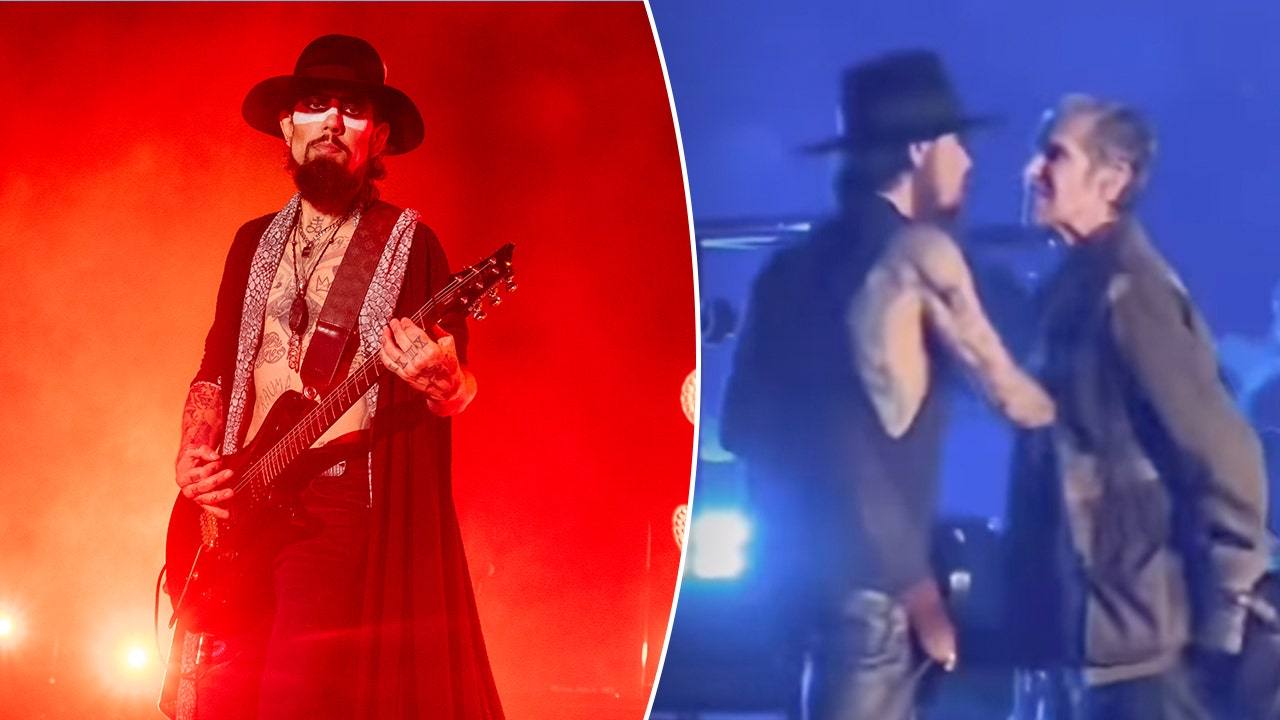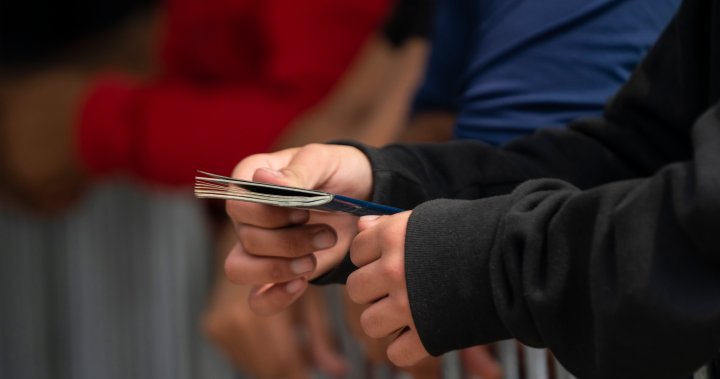The stellar Apple TV+ drama devotes part of a episode to the bombing of Nagasaki — and changes the arc for the rest of Season 2
This post contains spoilers for this week’s episode of Pachinko, which is now streaming on Apple TV+.
Among the many highlights of the incredible first season of the Apple historical epic Pachinko was its penultimate chapter. Until that point, the series had largely bounced back and forth between Korea in the Twenties and Thirties and Japan in the Eighties, presenting multiple generations of the same Korean family, caught up in their nation’s long and messy history with its neighbor from across the sea. But right before the finale, the story rewound to 1923, revealing how the menacing Korean gangster Koh Hansu (Lee Min-ho) first came to work for a Yakuza boss, and depicting the two of them as survivors of that year’s Great Kanto Earthquake. The episode presented stunning spectacle, while saving its true horrors for the quake’s aftermath, when Japanese vigilantes began massacring Koreans.
Like the rest of Pachinko, adapted from Min Jin Lee’s novel, this hour deftly blended fact with fiction, using this real-life tragedy to not only explain how Hansu grew up into the shadow perpetually hanging over the life of Sunja (Minha Kim in the Thirties, Yuh-Jung Youn in the Eighties), but to underscore the enmity between the nations, and the peril of Sunja and her family moving to Osaka at the end of that season.
This week’s installment, the fifth of eight Season Two episodes, is a spiritual sequel to the earthquake episode, even if its structure is very different. Instead of devoting a whole hour to the dramatization of a historical calamity, we only get 13 minutes on one, as Sunja’s brother-in-law Yoseb (Junwoo Han) is working at a Nagasaki factory on August 9, 1945 — a.k.a. the day the United States dropped an atomic bomb on the city.
But those 13 minutes are presented with such terrible clarity, and such a relentless sense of impending doom, that it feels like it lasts for hours, and informs the terrific, time-skipping episode that follows it.
The Nagasaki scenes are shot in stark black-and-white, which initially just seems an apt way to depict the bleak and colorless existence of Yoseb and his Korean coworkers. They are treated as little more than cogs in the war machine of a nation that has enslaved their homeland. A Japanese employee compares the Koreans to cockroaches, forever multiplying, and you get the sense this is among the nicer things he’s said on the subject. Yoseb occasionally gets release from the cards sent from his wife (and Sunja’s sister) Kyunghee (Eunchae Jung), but for the most part, he is just struggling to get through each day of the ordeal, hoping the war can end and he can be returned to his family.
Editor’s picks
He gets what he wishes for, but in the most nightmarish way. The early scenes keep ticking from one day to the next, the bomb getting ever closer, as we also see a Korean factory newcomer, Tae Hoon (Seung-Hwan Baek) attempt to befriend the older Yoseb, and eventually plot to attack his Japanese oppressors. On the morning of the ninth, a Japanese VIP visits the the factory, Tae Hoon attempts to stab him, Yoseb stands in his way, and for his trouble gets stabbed, then thrown into the back of a truck, right before the world turns blindingly white, permanently scarring both the city and anyone in it lucky enough to survive the day.
The dropping of two bombs — with the deceptively innocent names Fat Man and Little Boy — on Nagasaki and Hiroshima is in one way too big a story to wholly fit inside the narrative of Pachinko. Whole movies have been made just about their construction and use, one of which you might have seen not too long ago. Even focusing on the physical and emotional devastation wrought on the two cities and their occupants should be more of a task than Pachinko should be up for, especially as this season has expanded the generational story to include Noa (Kang Hoon Kim), the son born of an affair between Sunja and Hansu, and his brother Mozasu (Eunseong Kwon), fathered by Sunja’s late husband Isak, whom Noa believes to be his father.
Related
But skipping past that tragedy, and Japan’s ultimate surrender to the Allies, would ring false in a show that to this point has done such an impressive job of using this specific family as avatars for everyone involved in this vast cultural and historical tale. So this week’s episode deals with August 9th the best way it can, counting down to it day by day, then offering us only the briefest (and most budget-friendly) glimpse of the bombing itself. Then color returns to the series, World War II comes to an end, and Sunja and her family get to move on — and to welcome back Yoseb, whose placement in the truck provides just enough shielding for the bomb to mutilate but not kill him.
From there, we see the clan returning to a bombed-out Osaka, and to the wreckage of their home. They prepare to rebuild, and the story jumps forward five years to show the results of their efforts. Noa and Mozasu are now teenagers (played by, respectively, Tae Ju Kang and Mansaku Takada), and the studious Noa is on the verge of achieving his mother’s dream for him of a university education. Yoseb, meanwhile, has become a bitter recluse, not leaving the house, while Kyunghee continues to have an emotional affair with Kim (Sungkyu Kim), whom Hansu has embedded into the household to spy on Sunja and Noa.

Big time jumps can be tricky to pull off, especially when it involves child characters being recast, as we saw in the first season of House of the Dragon. But Pachinko already has experience with this from Season One, where we also spent time with Sunja as a little girl, in addition to the adult and elderly versions who have continued into this year. And the four-plus episodes leading into the time jump do such a good job of establishing Noa — who is conspicuous in his absence from the 1989 story(*) — and Mosazu (played as a middle-aged man by Soji Arai) as distinctive, vulnerable, endearing characters, that the teen actors immediately register as older versions of people we already know well.
(*) If there’s a fault in the new season, it’s that the Eighties story now drags compared to the mid-century part of the narrative. The older Sunja seeking happiness in her final years feels poignant, but the business dealings of Mosazu’s son Solomon (Jin Ha) feel both confusing and besides the point. (My understanding is that the first season used up all of the Solomon material from the book, and the new material is an invention of the show’s.) It’s also a shame that there’s so little for new Emmy winner Anna Sawai, in her first time back on TV since the end of Shōgun, to do in reprising her Season One role as Solomon’s former coworker and current love interest Naomi. That said, Jin Ha and Soji Arai do some of the best dancing in this season’s musical opening credits sequence, which should, like the Season One credits, serve as a reminder that almost every show would be improved by simply letting its actors dance over the main titles.
Trending
The time jump also brings us to the story’s next major historical crossroads, since the episode concludes on another key date: June 25, 1950, the beginning of the war between North Korea and South Korea. The end of WWII brought with it the end of the Japanese occupation of Korea, but Sunja and the others find themselves still on foreign soil, with their own countrymen preparing to fight and kill one another back home.
Without spoiling what’s to come in the season’s final three episodes, I’ll say that the show continues to find smart and powerful ways to let its characters bounce off of immutable, factual events of the period. And it continues to be a beautiful showcase for its great cast and its gifted crew. It was, and is, special.

 2 hours ago
1
2 hours ago
1
















.png)

.png)
.png)
.png)













 English (US) ·
English (US) ·  Hindi (IN) ·
Hindi (IN) ·